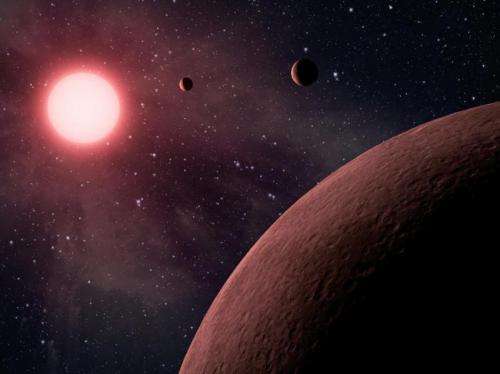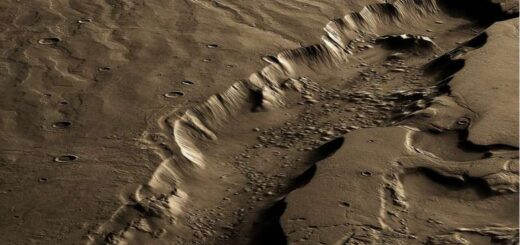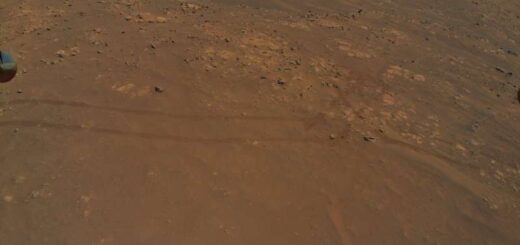Astronomers discover a Neptune-mass alien world with Earth-like density

An international team of astronomers reports the discovery of a Neptune-mass exoplanet with a density comparable to Earth’s. According to the research, the newly detected alien world, designated EPIC212521166 b, is the most massive planet with a sub-Neptune radius found to date. A paper detailing the finding was published online on May 13 in a pre-print version
The team, led by Hugh Osborn of the University of Warwick, U.K., has analyzed the data provided by NASA’s Kepler spacecraft prolonged mission, known as K2, in order to look for possible planets orbiting the star EPIC212521166. It is an 8 billion-year-old, metal-poor dwarf star with a mass of slightly more than 0.7 solar masses, located some 380 light years away. The K2 mission identified this celestial body as a strong candidate for hosting planets.
Osborn and his colleagues performed follow-up radial velocity observations of EPIC212521166 to confirm the presence of exoplanets around it. For their observations, conducted in March 2016, they used the High Accuracy Radial velocity Planet Searcher (HARPS) spectrograph, mounted on the 3.6 m telescope at the European Southern Observatory’s (ESO) La Silla observatory in Chile.
“We present the detection of a sub-Neptune radius planet around the K field dwarf EPIC212521166 from K2 photometry and the confirmation and mass measurement of this planet with HARPS radial velocities,” the researchers wrote in the paper.
According to the study, EPIC212521166 b orbits its parent star approximately every 14 days. The planet has a mass of 18.3 Earth masses and radius of about 2.6 Earth radii, which makes it the most massive exoplanet with a sub-Neptune radius detected so far.
With a density of 5.7 g/cm3, the planet is expected to have a large rocky core. The researchers computed that the core must be composed mostly of enstatite (70 percent) and iron (30 percent). They also argue that the planet could have significant water content and a hydrogen-helium atmosphere.
“A two-layer iron-silicate composition model is unable to explain the density of EPIC212521166 b. Instead, either low-density volatiles such as water, an H-He atmosphere, or a combination of both must be present,” the paper reads.
The scientists emphasized that the unusual density of this planet suggests that mass-radius relations should be used with extreme caution in the regime between terrestrial planets and gas giants.
The research also indicates that the evaporation process was unlikely the cause of such a high observed density of EPIC212521166 b. Thus, the planet likely formed dense, potentially after the gas disc has been photoevaporated. The scientists suggest that the planet likely disc-migrated to its current position; however, the lack of a thick hydrogen atmosphere doesn’t support this theory.
The team concluded that the planet’s migration and the absence of significant hydrogen atmosphere could be explained by giant impacts and accretion between a former compact multiplanet system.
“This hypothesis also supports the interpretation of an old age for this system, over which time the likelihood of dynamical instability is increased,” the astronomers noted.
The EPIC212521166 system could also host other exoplanets. The team has searched for potential other transiting planets in this system but found no significant signal so far.



 Creators of mankind
Creators of mankind Description of “Tall white aliens”
Description of “Tall white aliens” Where they came from?
Where they came from? About hostile civilizations
About hostile civilizations The war for the Earth
The war for the Earth “Tall white aliens” about eternal life
“Tall white aliens” about eternal life Video: “Nordic aliens”
Video: “Nordic aliens” Aliens
Aliens Alien encounters
Alien encounters The aliens base
The aliens base UFO
UFO Technology UFO
Technology UFO Underground civilization
Underground civilization Ancient alien artifacts
Ancient alien artifacts Military and UFO
Military and UFO Mysteries and hypotheses
Mysteries and hypotheses Scientific facts
Scientific facts


















